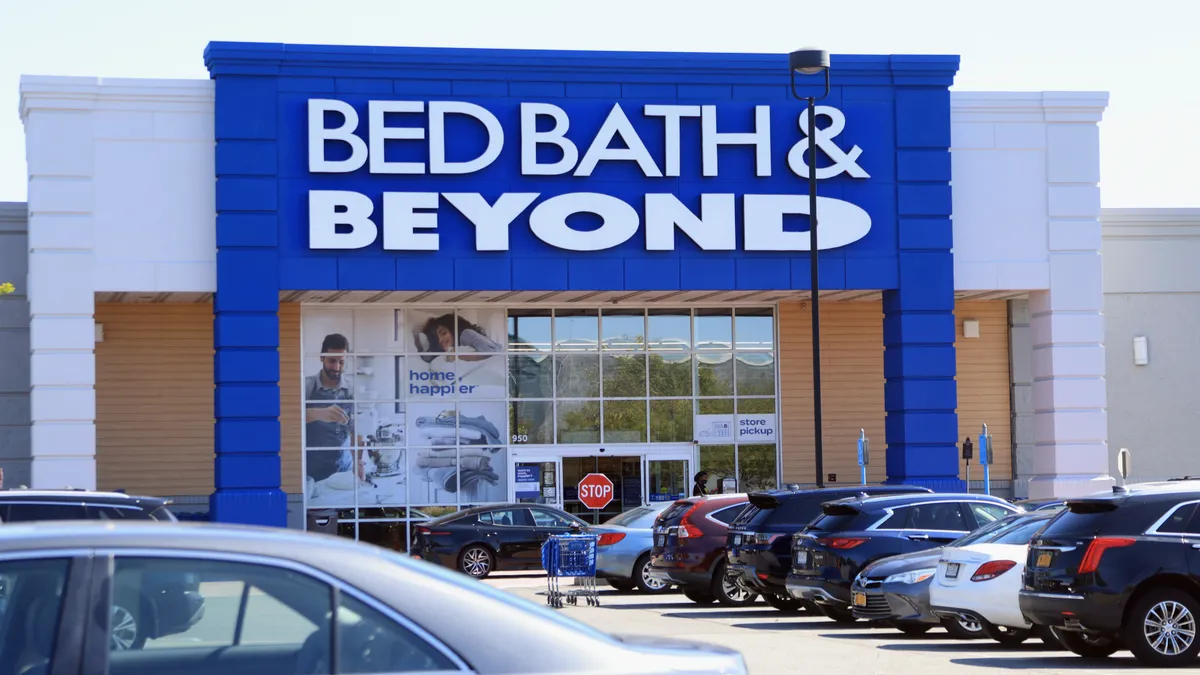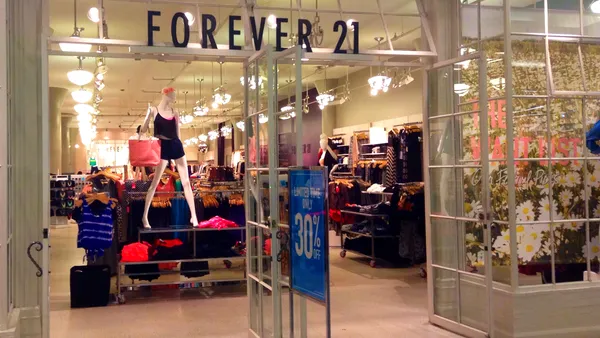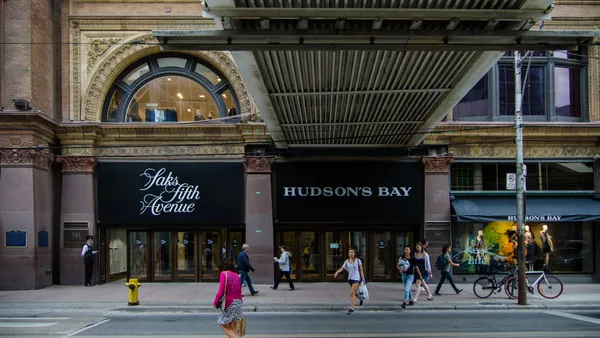Dive Brief:
- Bed Bath & Beyond on Wednesday received a notice of default from JPMorgan Chase, which is calling for an immediate repayment of debts under the credit agreement.
- The home goods retailer warned it doesn’t have enough cash to pay down its debts, according to a Thursday filing with the Securities and Exchange Commission.
- As a result, the company said it needs to consider all strategic alternatives, including bankruptcy. The retailer initially warned of a potential bankruptcy filing earlier this month.
Dive Insight:
Bed Bath & Beyond is moving closer to a bankruptcy filing.
Three weeks ago, the distressed home goods retailer issued a “going concern” warning and said it was exploring strategic options, including selling assets, pulling back or delaying business activities, seeking additional debt or equity capital or filing for bankruptcy.
Now, the retailer has warned again that a filing may be in its future after saying it “does not have sufficient resources to repay the amounts under the credit facilities.”
Bed Bath & Beyond owes $550 million under an asset-backed loan with JPMorgan Chase and $375 million under a first-in-last-out facility with Sixth Street Partners. The company also has about $1 billion in senior notes as of the end of November and $153.5 million in cash and cash equivalents.
The company in its filing said it is working to improve its financial position in several ways, including by cost cutting, lowering capital expenditures and reducing its store footprint. It is also seeking reductions in rental obligations with landlords. However, as the company warns, these efforts may not be enough.
The retailer, like many operating in the home goods sector, benefited at the onset of the pandemic as more consumers invested in their homes. But the temporary lift to sales only masked the underlying problems Bed Bath & Beyond was facing. A failed private label strategy — which led to out-of-stocks of key products — caused the retailer to lose millions of dollars in sales. Now, with cash dwindling, the retailer has few if any other options beyond bankruptcy court.
“Short of a miracle in the form of a sale of part of the business or a loan from an investor, the most likely outcome is bankruptcy,” GlobalData Managing Director Neil Saunders said in emailed comments. “The latest twists and turns will absorb the full attention of management who, while trying to find a path forward, have completely lost sight of day-to-day trading. This is reflected in the absence of any credible future strategy, the poor state of many stores, and the anxiousness of associates.”













